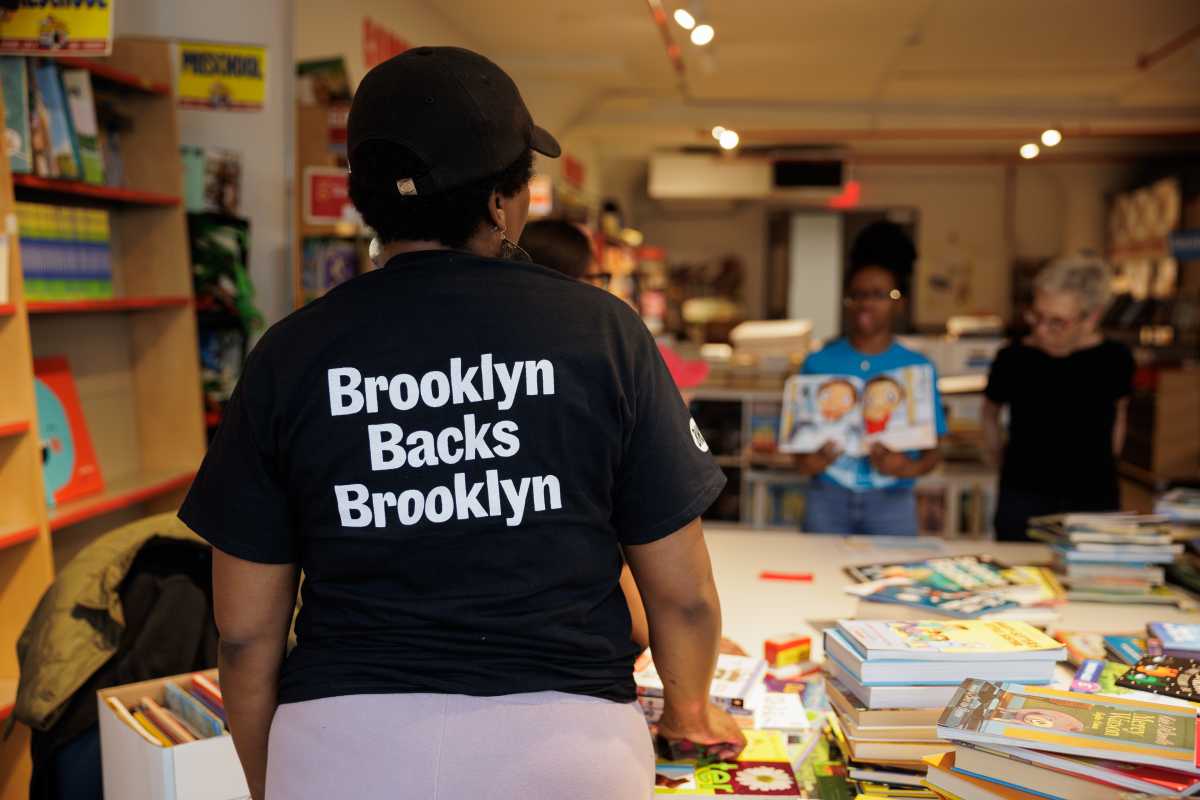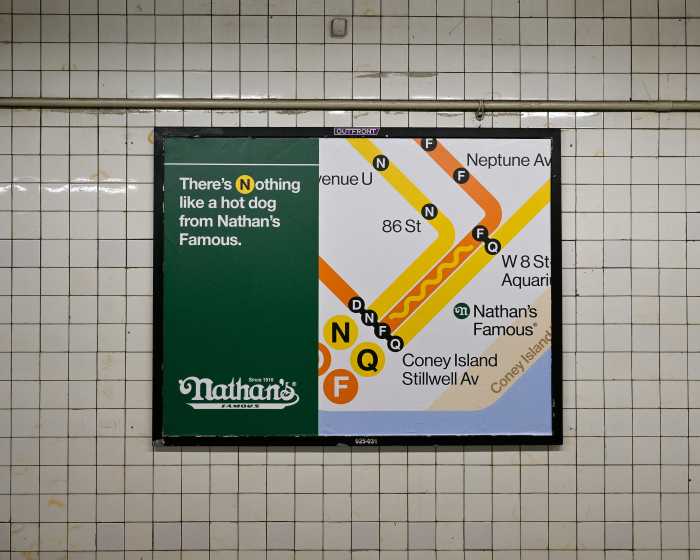By Martin Sokolinsky
We first heard a year ago that the South Street Seaport Museum was making plans to sell the Peking to Germany. It came as a shock to us weekend volunteers.
Sell the Peking? Sell a floating exhibit that was part of the Manhattan skyline? Yet the scuttlebutt was that the museum would be grateful to a maritime group in Hamburg if they took our ship away. Why? It would cost tens of millions of dollars to get Peking sailing again.
“You guys don’t like the news any more than me,” Jesse Schaefer, who had skippered a tall ship, told me and other volunteers that day. “I mean the German preservationist group offering South Street a million dollars for Peking.”
“We’ve been working on the ship for years,” one of us grumbled. “Why would anybody want to sell her now — after all that effort?”
We talked about how the city of Hamburg claimed the ship belonged to them because she was built there in 1911. “Well, according to that kind of logic,” Jesse said, “we should return our other ship, Wavertree, to the city of Liverpool.”
I admit that I had a lump in my throat. And something in all this gloomy conjecture made me recall the face of a volunteer from 25 years before. A man who remained fearless and unbowed to the end, Al Wecht, who had also crossed an ocean to come here from Germany.
My mind roamed back to that chilly autumn morning when Charlie Deroko, South Street’s waterfront director, told the weekend volunteers that he wanted us to remove Peking’s main lower-topsail. Four of us climbers went up.
I followed Jesse Schaefer into the narrow, almost vertical main topmast rigging, until we were 80 or so feet in the air. From there, Peking’s long deck seemed as narrow as a plank.
That was when I first saw Al Wecht — the man who would become known to us as “the oldest volunteer.”
With a fresh breeze blowing from the south, he — like any good seaman — was preparing to climb the windward rigging. This way, the wind would press him against the ratlines, instead of blowing him away from them. But what surprised us most: he was dragging a ladder into position against the ship’s bulwark. None of us ever bothered with ladders to get on top of something a mere five feet high.
We watched him climb the first 20 ratlines so timidly that it seemed he would never reach us.
“Who’s this coming up?” Jesse said, shaking his head. “And no safety belt on him.”
Our stranger looked like a tourist — quite possibly foreign — just coming up to see what we were doing. I exchanged a glance with Jesse and, shifting his gaze downward, he began shouting.
“On deck, there! Some guy’s coming up! You’ll get him down? That’s well.”
A minute later the waterfront director mounted to the poop deck and, with lungs of leather, bellowed: “Get down from there, you! Yes, you! ”
Now I could see his face clearly. This man was so old that you almost wanted to lend him a hand as he made his way up the steep rigging.
“Hey, fella, get down!” we shouted from the yardarm. And though I felt sure he understood my message, he wasn’t backing down. Most guys his age stay at home worrying about slipping on wet steps, or on a patch of ice or a scatter rug. They’re always scared of taking a tumble on the stairs and they even have grab bars installed in their showers. And here’s this old codger with enough strength, flexibility and gumption to climb the Peking’s rigging.
“Maybe he didn’t understand the sign. He could be a tourist from Europe,” I said. “I know a little German.”
“Go ahead, try it.”
“Was Sie tun ist streng verboten. Climbing strictly forbidden here!” I shouted at the top of my lungs. “Get down — sofort!”
And in German far better than mine he answered that he just wanted to help, that he was a newly arrived volunteer.
Jesse pointed down to the deck and ordered me, “Get him to go down!”
“Wir brauchen kein Help. Go zurück,” I bawled.
Two Seaport security guards had just boarded the Peking. But having no intention of climbing up 85 feet to collar this interloper in the rigging, they began using their bull-horn: “Get the hell down or we call 911. The cops are going to take you to Bellevue.”
Our German tourist’s understanding of English was good enough, for now he started backing down the shrouds.
We watched his painfully slow descent until finally regaining the ladder that stood against the bulwark. There he began talking to Charlie and the three other volunteers (“non-climbers”) we had left on deck. But, somehow, the stranger’s presence aboard Peking must have been legitimate because we saw the security guards leave the ship without him.
By the time we’d gotten that 90-foot “cigarette roll”— the tightly furled topsail — lowered nearly to deck level, the four of us had had a bellyful of standing on footropes for one day. When Jesse finally said, “Okay, we’re out of here,” we started down. Stiff and cold, we were proud of the work we’d done.
And there he was, our tottering interloper, helping the deck gang at the winch. The truth was we needed every hand, for the ponderous topsail now had to be moved to the after hatch. Once there we lowered the sail, like some huge python, below decks and coiled it on a long poly tarp. The job was done.
As I shrugged off my harness, I heard the stranger speaking in good English albeit with a slight German accent. “I was 17 when I first went to sea. First as deck boy in 1913 and later ordinary seaman, I been around Cape Horn twice on the Peking,” he said. “When the war broke out, the Chileans interned the ship for the duration. It was just the ship they impounded, mind you. Our consul offered the Peking’s crew free passage home to Germany, but I signed articles aboard a neutral steamer bound for New Orleans. She was shorthanded one man. I jumped ship there in 1915.”
Another volunteer next to me, Susan, whispered that if the man had sailed on the Peking at the outbreak of World War I, he must be about 92 years old (if Wecht remembered the years correctly, he was closer to 88). Back then, Peking was one of a fleet of steel barks owned by Laeisz Lines of Hamburg. These enormous “P” ships of Laeisz Lines represented the last gasp of the age of sail. Built to ply the trade-wind routes, the four-masted vessel carried manufactured goods and fuel from Europe to the West Coast of South America, where she would then load guano (bird-droppings) for her return voyage. When processed, these nitrates were used for fertilizer.
“How does it feel to walk Peking’s deck after all these years?” one of us asked.
“Well, it makes me remember things, by Joe. I’d forgotten how the cook once chased me with a knotted rope’s-end. He was real angry because I let a big wave knock me down when I was carrying the crew’s supper. It all ended up in the scuppers — me and the food.
“But there’s one thing I’ll never forget, by Joe,” he went on. “It was the pain in my fingers while we worked aloft near Cape Horn. Even though Peking was caught in a gale, even though the night was bitter cold and the footropes icy, they wouldn’t allow us to wear gloves, no sir, by Joe. The captain said we’d never get a grip on the canvas with gloves. And if the glove ever slipped off your hand, you were gone.”
“Was that why you quit going to sea, Al?” one of us asked.
“No, that wasn’t it. On Peking I had a roof over my head and three meals a day. But in 1914 Germany got into the First World War. Me, I couldn’t see any sense in getting myself killed the way a couple of my friends did. They got blown up in the trenches in France. So I decided to stay out of it. I lived down South for a few years and managed to pick up odd jobs — usually, as a house painter. Then, in New York, I got steady work on office buildings. They needed painters willing to ride a scaffold 50 stories up. And that’s what I did for the next 35 years, until I retired.”
Our nonagenarian came back every Saturday in the summer in 1984 — that is, his married daughter would bring him over from Staten Island at 9 a.m. and meet him again at 4 p.m. One morning Al came up the gangway followed by his 15-year-old grandson, and a new coordinator grabbed her clipboard and started filling out the Seaport volunteer application.
“Your son’s name, sir? What’s his age?”
“No, that’s all right,” Al said, “my grandson’s just here for a look. I’m the volunteer.”
This feisty seaman did rigging work for us but always while seated on a chair and always on deck. The museum never allowed him to go aloft again. With Dacron rope, he turned in perfect eye-splices as well as long and short splices. Just give him the measurements and, within minutes, he had produced a strong, beautifully tucked ratline for us to install aloft.
Through meeting an old shellback like Al Wecht, a man who had actually sailed Peking around the Horn, our weekends of volunteering at the Seaport became voyages into history.
And, while we worked hard enough over the years to keep Peking in New York, it occurs to me now that the people of Hamburg might even have a keener interest in her. Who are we to stand in the way if they can give Peking a new lease on life?
Martin Sokolinsky, an adjunct instructor of literary translation from German, is a volunteer at the South Street Seaport Museum.

































